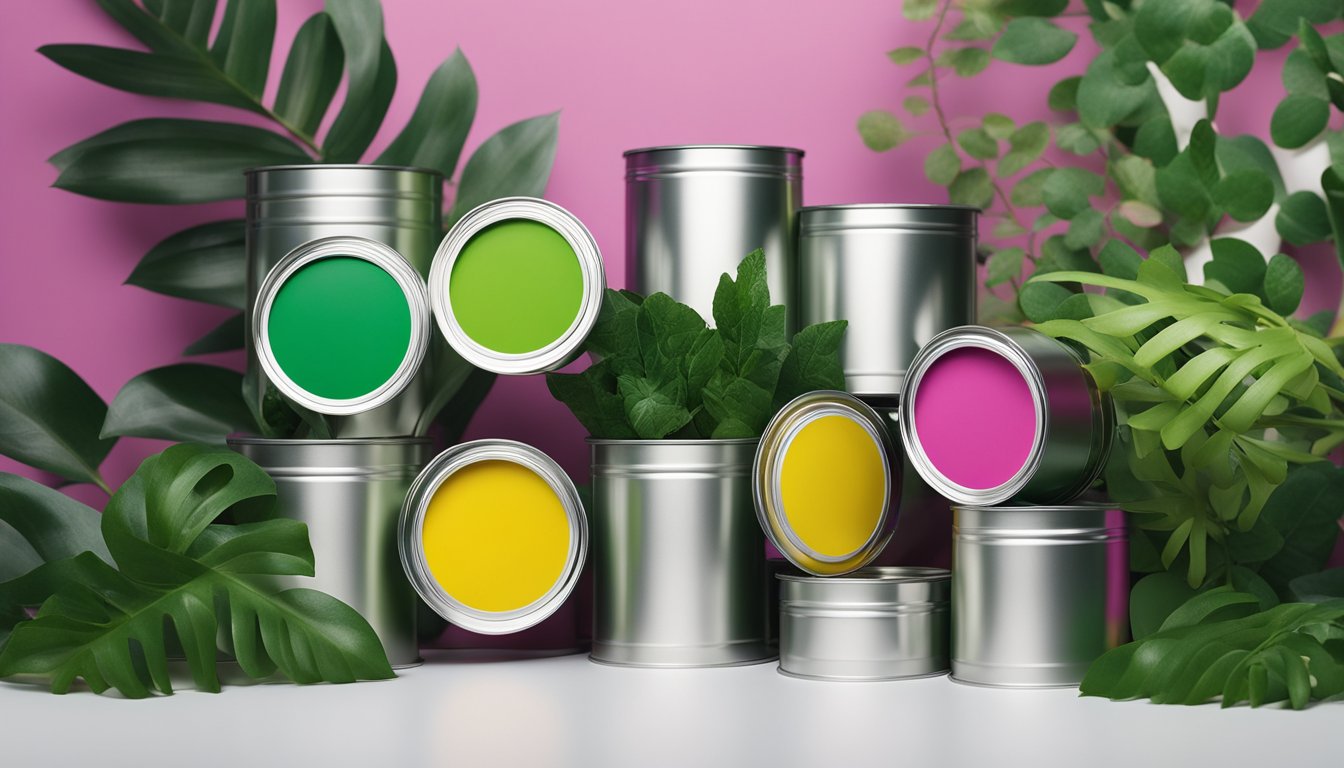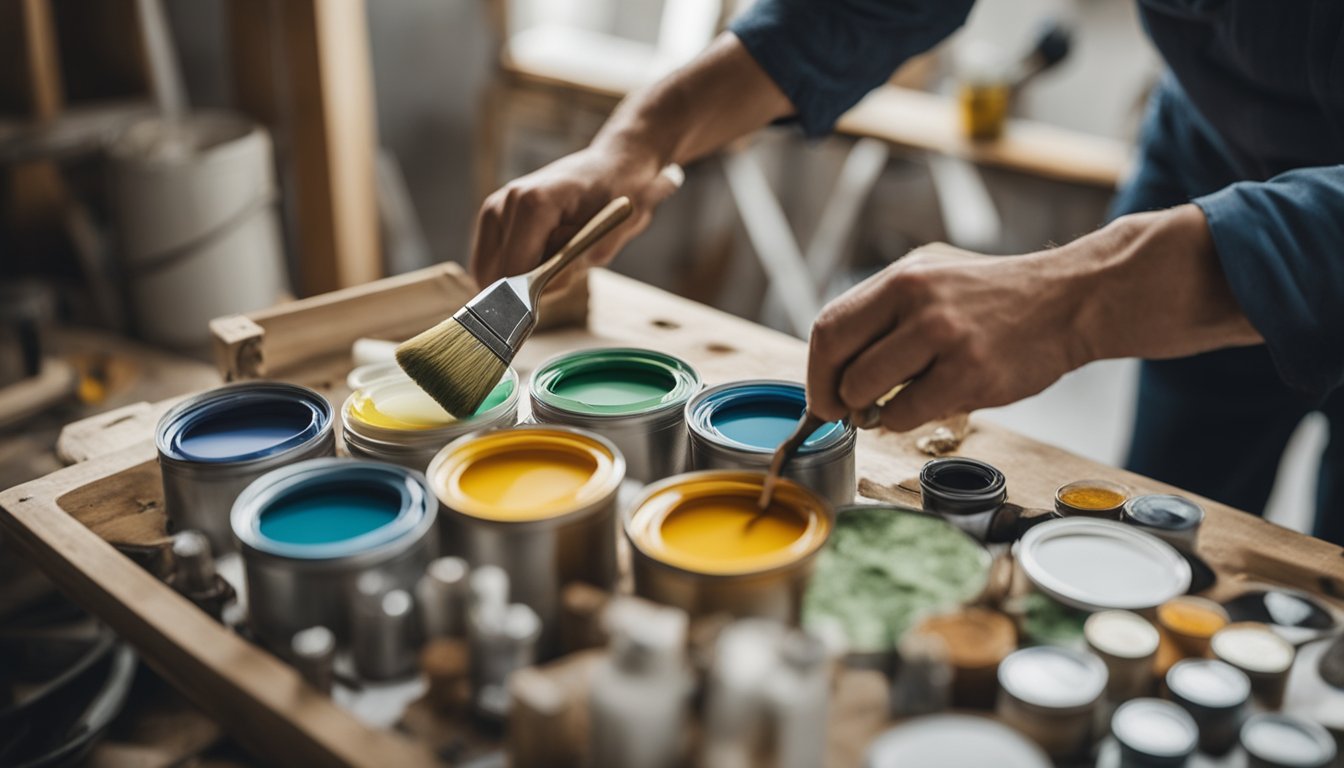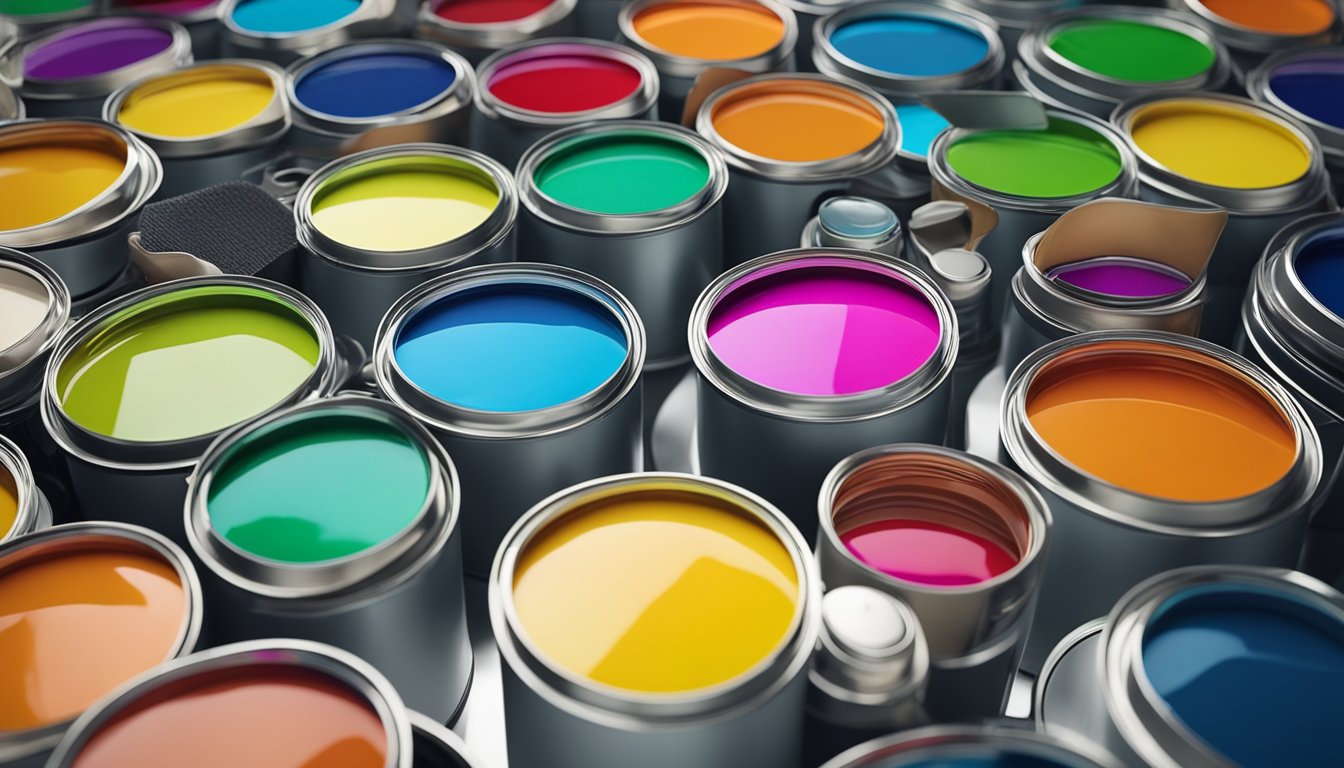Late updated: 03 Oct 2024 08:10
Written by: Daniel Harper
Innovative Eco-Friendly Paint Solutions: Transforming Sustainable Home Design
As we venture into a world more conscious of our environmental footprint, the realm of painting has not been left behind. With increasing innovation in eco-friendly paint solutions, it's possible to transform our living spaces while also contributing positively to our planet. These paints reduce the use of volatile organic compounds (VOCs), leading to a healthier living environment and a significantly smaller environmental impact.

The latest advancements in this sector ensure that eco-friendly paints don't compromise on quality. Many brands offer vibrant colours and durable finishes while prioritising sustainability. This means we can indulge in creative interior design without the guilt of harmful emissions.
Eco-friendly paints also pave the way for sustainable living practices. By choosing paints formulated with renewable materials, we are making a conscious decision to support a cleaner and greener future. It’s fascinating to see how these small changes can collectively contribute to a healthier planet.
Key Takeaways
- Eco-friendly paints reduce harmful VOC emissions.
- Sustainable paint options offer quality finishes.
- Choosing eco-friendly paints supports sustainable living.
Breakthroughs in Eco-Friendly Paint Technologies
In recent years, there have been significant advancements in eco-friendly paint technologies. These breakthroughs include improvements in low-VOC and zero-VOC formulations, innovative use of natural ingredients, and rigorous certification standards to ensure product safety and sustainability.
Advancements in Low-VOC and Zero-VOC Paint Formulations
The shift towards low-VOC and zero-VOC paints marks a crucial development in reducing volatile organic compounds. These compounds contribute to air pollution and can cause health issues.
Modern resin technology has allowed manufacturers to produce paints that emit minimal to no harmful fumes. This development is significant for both indoor and outdoor applications.
Furthermore, companies have engineered solutions to maintain the durability and finish of these paints. Some formulations now resist fading and peeling more effectively than traditional options, reducing the need for frequent repainting and lowering environmental impact.
Innovations in Natural and Sustainable Paint Ingredients
Natural and sustainable ingredients are crucial elements in developing non-toxic paints. Utilizing renewable resources, these paints incorporate substances like milk protein, clay, and plant-based pigments.
These materials offer a viable alternative to petrochemical-based products, providing both health and environmental benefits. For instance, milk paint, made from casein, offers excellent adhesion and is biodegradable.
Clay paint, another option, provides breathability to surfaces. This helps regulate humidity and creates healthier indoor air quality. Employing natural ingredients not only contributes to our health but also supports sustainable practices and reduced ecological footprints.
Eco-Friendly Paint Certification Standards
Strict certification standards ensure eco-friendly paint options meet safety and sustainability criteria. Important certifications like Green Seal and GREENGUARD are recognised markers of environmental performance.
These certifications assess VOC content, eco-toxicity, and social responsibility, reinforcing consumer trust in the product's safety. Similarly, the Master Painters Institute's Green Performance Standard evaluates functional performance alongside environmental credentials.
By adhering to these standards, manufacturers demonstrate a commitment to producing paints that are both effective and environmentally responsible. This assures us that eco-friendly paints are not just a healthier choice but also a sustainable one.
Applying Sustainable Painting Practices

Adopting sustainable painting practices involves careful planning and execution. Key aspects include preparing surfaces thoughtfully and managing waste responsibly to enhance eco-friendliness. Let's delve deeper into these crucial components.
Essentials of Surface Preparation and Application
Proper surface preparation is vital for ensuring the longevity and effectiveness of eco-friendly paints. We begin by cleaning surfaces thoroughly to remove dirt, grease, and old paint residues. Sanding may be required to provide a smooth base. This step ensures that water-based paints adhere better, reducing the need for multiple coats and promoting a durable finish.
We also consider the benefits of paints that reflect light, thereby reducing the need for artificial lighting and contributing to energy efficiency. Eco-friendly painting techniques like precision taping and the use of microfiber rollers can minimise paint waste and enhance the application quality. Through such detailed preparation, we not only achieve a superior aesthetic but also align with sustainable living practices by promoting healthier indoor air quality.
Effective Waste Management and Disposal
Managing waste efficiently during painting projects is essential for sustainability. We categorise waste to separate non-hazardous materials from hazardous ones, such as paint thinners and solvents. Responsible disposal of hazardous waste is crucial to prevent environmental contamination.
Leftover paints should be stored properly for future use, or donated to community projects if not needed. Recyclable packaging options for paints and using refillable containers help reduce overall waste. Composting biodegradable materials used during preparation further aligns with eco-friendly goals. By incorporating these mindful waste management strategies, we mitigate the environmental impact of painting activities, supporting a healthier planet.
Frequently Asked Questions

Eco-friendly paints are increasingly popular, offering both health and environmental benefits. These paints utilise sustainable materials, limit harmful emissions, and sometimes even absorb CO2.
What are the key components of the most sustainable paints available today?
Sustainable paints often include natural ingredients like plant oils, clay, and chalk. They minimise volatile organic compounds (VOCs), enhancing indoor air quality. Additionally, some incorporate recycled materials, further reducing their environmental footprint.
How can one produce paint that has minimal impact on the environment?
To produce environmentally friendly paint, it's essential to use non-toxic, biodegradable ingredients. Avoidance of petrochemicals is crucial. Manufacturers often opt for water-based solutions and renewable resources, making them less harmful to nature.
What advancements have been made in eco-friendly painting technologies?
Recent advancements include paints that absorb CO2, contributing to pollution reduction. These innovations are coupled with increased durability, meaning less frequent repainting is required, which conserves resources over time.
In what ways can paint be biodegradable, and what products currently meet this criteria?
Biodegradable paints break down naturally without leaving harmful residues. Products meeting this criterion often use plant-derived compounds. Some modern eco-friendly brands now offer biodegradable options that align with sustainable practices.
What are the health and environmental benefits of using eco-friendly paints?
Eco-friendly paints significantly improve indoor air quality by reducing harmful VOC emissions. They also limit pollution, especially during production and application. Using these paints supports a healthier living environment and promotes ecological conservation.
How does the lifecycle analysis of eco-friendly paint compare to traditional options?
Eco-friendly paints typically showcase a more sustainable lifecycle. Production involves fewer resources, lower emissions, and less waste generation. Over their lifespan, they require less maintenance, which contributes to long-term environmental benefits compared to traditional paints.
